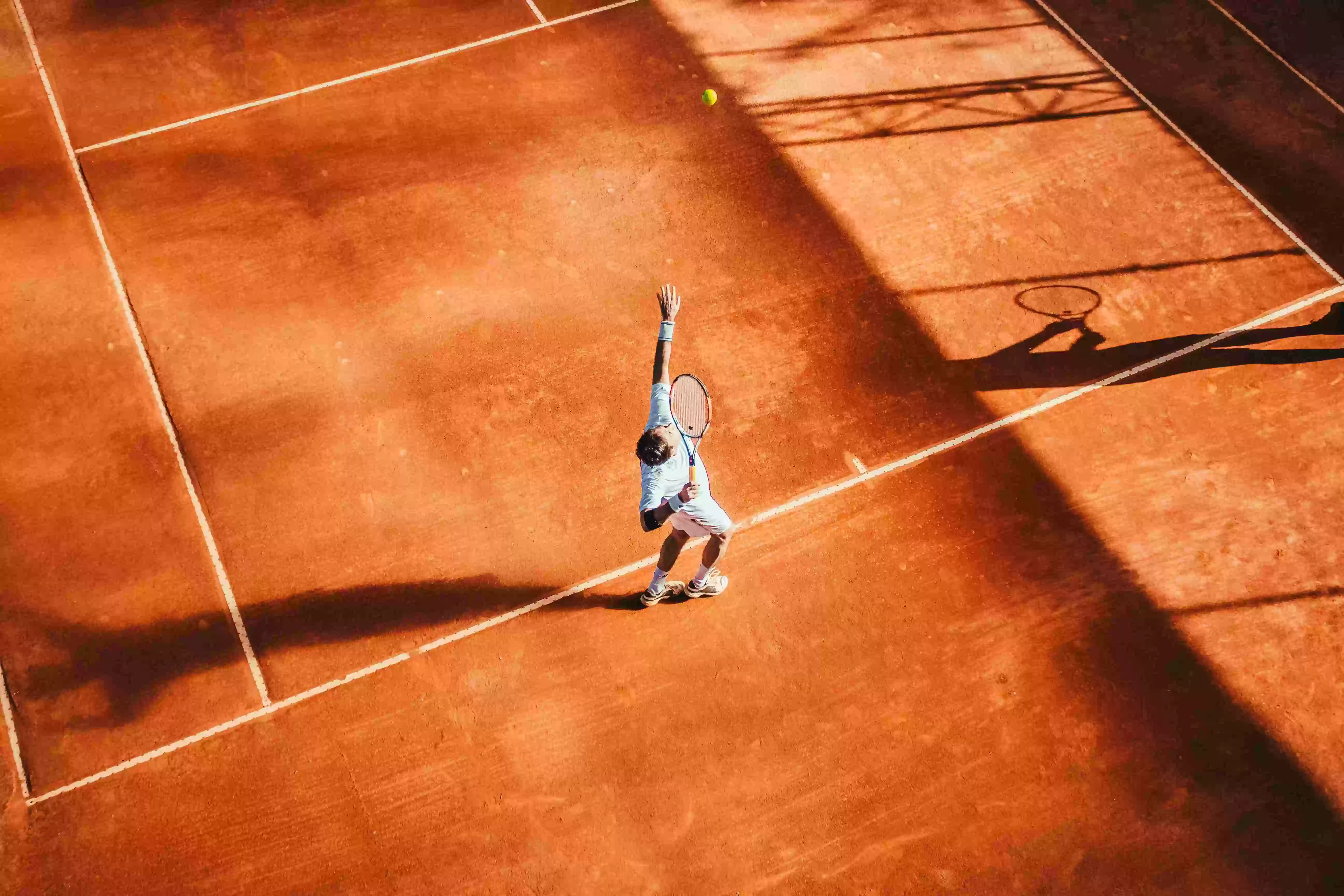Summary of our market study
The French market for tennis rackets is estimated at between 40 and 45 million euros.
It is dominated by major brands such as Babolat, Wilson and Head. France's Babolat has become a world leader in the sector, with around 30% of the global market.
Players buy their equipment mainly from multisport stores such as Decathlon and Intersport.
The production of carbon fiber rackets remains the norm.
Trends in the French tennis market
The French tennis racket market observed in 2018 accounted for 43 million euros in revenue from racket sales alone. Sales fluctuate between 500,000 and 600,000 units sold per year.
Sales of tennis shoes, with over a million pairs sold, generate between 55 and 60 million euros.
Some 12 million balls (15 to 20 million euros in sales) and 500,000 strings (10 to 15 million euros) are sold every year.
44% of players belong to a club, and 40% play independently. The Ide-France region accounts for nearly a quarter of all tennis club members.
More than half of all players claim to play tennis all year round. Young players aged 5-19 account for just over half of all members of the Tennis Federation.
The French trade balance is slightly in surplus. Imports come mainly from China. French exports are mainly destined for European markets, with Italy, Germany, Spain and the UK accounting for a significant share.
Players in the tennis racket market
- Décathlon, offers a range of tennis products under its own brand, Artengo.
- GoSport, a major multisport retailer
- Babolat , a leading name in the tennis equipment industry, and a leader in tennis string technology. Wilson , a highly reputed brand
- Head, a niche player with a wide range of rackets
- Prince, a brand with a significant tennis heritage
to understand this market
Detailed content of our market study
 Inforamtion
Inforamtion
- Number of pages : 35 pages
- Format : Digital and PDF versions
- Last update :
 Summary and extracts
Summary and extracts
1 Market overview
1.1 Definition and scope of the study
A tennis racket is an instrument for playing tennis by returning the ball to the opponent's court, consisting of a handle and a sieve. The tennis racket weighs more than 280g, which makes it the heaviest racket compared to squash, table tennis and badminton.
About 5 million French people play tennis every year and this market represents in France a few hundred million euros. In 2018, nearly 20,000 tournaments were organized and nearly 2 million official matches, with over 7,500 tennis clubs present in France. Most tennis players and buyers of tennis rackets are members of tennis clubs.
In terms of distribution, the major retailers dominate the market and have a 70% market share, far ahead of pure player websites (15%) and independent stores and tennis specialists (around 10%). The tennis market is dominated by a limited number of well-established equipment manufacturers, which leaves little room for new entrants. In order to sustain its growth, the tennis market has refocused on its core business: products designed solely for practice, with a more technical nature(connected racquets, connected wristbands, etc.).
The tennis market is now facing the decline of the lifestyle dimension of the sport since the 1990s, and the refocusing of sales on purely sports equipment and accessories.
All our studies are available online in PDF format
Take a look at an example of our research on another market!
 Choosing this study means :
Choosing this study means :
Access to more than 35 hours of work
Our studies are the result of over 35 hours of research and analysis. Using our studies allows you to devote more time and added value to your projects.
Benefit from 6 years' experience and over 1,500 industry reports already produced
Our expertise enables us to produce comprehensive studies in all sectors, including niche and emerging markets.
Our know-how and methodology enable us to produce reports that offer unique value for money.
Access to several thousand articles and paid-for data
Businesscoot has access to all the paid economic press as well as exclusive databases to carry out its market research (over 30,000 articles and private sources).
To enhance our research, our analysts also use web indicators (semrush, trends, etc.) to identify market trends and company strategies. (Consult our paying sources)
Guaranteed support after your purchase
A team dedicated to after-sales service, to guarantee you a high level of satisfaction. +44 238 097 0676
A digital format designed for our users
Not only do you have access to a PDF, but also to a digital version designed for our customers. This version gives you access to sources, data in Excel format and graphics. The content of the study can therefore be easily retrieved and adapted for your specific needs.
 Our offers :
Our offers :
the market for tennis rackets | France
- What are the figures on the size and growth of the market?
- What is driving the growth of the market and its evolution?
- What is the positioning of companies in the value chain?
- Data from several dozen databases
Pack 5 études (-25%) France
- 5 études au prix de 74 €HT par étude à choisir parmi nos 1200 titres sur le catalogue
- Conservez -25% sur les études supplémentaires achetées
- Choisissez le remboursement des crédits non consommés au terme des 12 mois (durée du pack)
Consultez notre catalogue d’études sectorielles


















